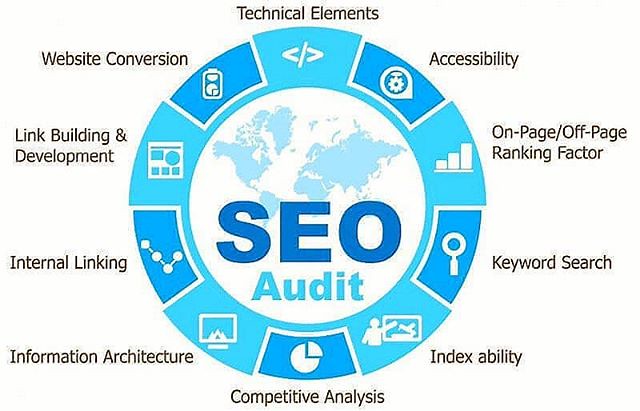Top Tips for Optimizing Landscape SEO Effectively
Decades ago, businesses could rely on a simple sign above the door to attract foot traffic.
Today, amidst a digital landscape teeming with competition, visibility online has become the linchpin of business success, driving customer engagement and sales. Brands without a robust Search Engine Optimization (SEO) strategy are akin to ships navigating without compasses—they lack the direction needed to reach their desired destination in the vast sea of digital content.
Mastering the intricacies of SEO requires a blend of technical acumen and creative marketing tactics, all carefully woven into an overarching strategy. For companies aiming to elevate their online presence, crafting a tailored landscape SEO approach is paramount to cut through the clutter and capture the audience’s attention.
Visibility is the lifeblood of business success.
Mastering Keyword Research
When it comes to planning and implementing landscape SEO strategies, keyword research remains the cornerstone of any effective approach.
Put simply: keyword research is the process of identifying the terms and phrases your target audience uses when seeking products or services akin to yours. Keywords are the signposts that guide potential customers to your digital doorway, and choosing the right ones is vital for capturing their attention and enhancing your online presence.
To optimize your website’s visibility, your keyword selection should reflect not just the searcher’s intent but also the language of the landscaping industry.
Think of keywords as seeds planted within your content; when cultivated with precision and care, they can grow into organic listings that are at the top of the search results.
In this sense, keyword research isn’t simply about finding popular terms; it’s about discovering the rich soil of relevance where your website can flourish and rise above the competitive terrain.
Learn how you can get to the top of the rankings faster with the help of Conceptual Creations…
Identifying Niche-Specific Terms
Niche-specific terms are pivotal for sculpting an SEO strategy tailored to your landscape business’s audience.
Recognizing niche-specific keywords elevates relevance and drives targeted traffic, bolstering your site’s SEO prowess.
For landscape companies, terms like “sustainable garden design” or “drought-resistant landscaping” not only attract the right audience but reflect current trends and concerns. These terms are the linchpins of a successful SEO strategy, ensuring that your content resonates with the desired demographic.
Incorporating these specialized terms into your content enhances visibility and expertly positions your website within the niche landscape industry. Properly identified, these keywords become powerful tools for capturing market-specific attention and climbing search rankings.
Analyzing Competitor Keywords
Competitor keyword analysis offers tactical insight into market dynamics and can inform strategic SEO decisions.
In doing so, landscape businesses can uncover gaps and opportunities within their own keyword strategy, pinpointing valuable terms that competitors are ranking for. This process not only enhances market understanding but also informs content and SEO strategies, potentially addressing unnoticed customer queries. Identifying these keywords helps preempt market shifts and maintain competitive parity.
Subsequently, analyzing these terms can reveal the strength and weaknesses of your competitors’ SEO strategies. Armed with this knowledge, businesses can carve out a unique position that aligns with their brand identity. It is essential to not just mimic but to strategically integrate and improve upon these keywords to outperform competitors.
Ultimately, integrating these insights into your own SEO strategy can lead to higher visibility in search results. It is crucial to regularly revisit this analytical process to adapt to the ever-changing search landscape. Staying ahead of the curve requires companies to evolve their keyword strategy continuously, thereby sustaining and enhancing their online presence.


On-Page Optimization Techniques
In the realm of on-page optimization, strategic placement and frequency of keywords are paramount. Yet, beyond mere keyword insertion, factors such as meta tags, header tags, and URL structure play instrumental roles in conveying site relevance to search engines. Moreover, optimizing images with alt text and captions can indirectly boost keyword presence and enhance user experience.
Properly executed, on-page optimization leads to a coherent narrative that seamlessly integrates keywords within the content. Content quality, readability, and formatting contribute to an authoritative and valuable information resource, further incentivizing search engines to favor your website in their rankings.
Crafting Title Tags and Meta Descriptions
Title tags and meta descriptions are pivotal for on-page SEO success. They signal to search engines the content’s primary topic and user relevance. These concise snippets are your website’s first impression in the search engine results pages (SERPs), often determining whether users will click through to your content.
Crafting these elements requires strategic thought and a keen understanding of your target audience. The title tag must be compelling, featuring the main keyword towards the beginning, while remaining under 60 characters to ensure full display on SERPs. Similarly, meta descriptions should engage the reader with a clear value proposition, fitting within a 160-character limit.
When writing meta descriptions, it’s vital to avoid duplication and to provide unique value for each page. This content should act as a compelling advertisement for the webpage, driving the user’s curiosity with a call to action. Studies have shown that well-crafted meta descriptions can positively influence click-through rates.
Reflecting the essence of your content in these tags is not just about SEO; it’s about creating clarity for potential visitors. When title tags and meta descriptions align seamlessly with the core subject matter, they set accurate expectations, thereby reducing bounce rates and fostering user trust. They are not just metadata; they are a brand’s digital handshake.
Remember, title tags and meta descriptions may be small in word count, but their impact on visibility and user engagement is significant. Allocate the necessary time to optimize these elements, and they will serve as powerful tools in attracting organic traffic to your website.
Improving Content Relevance
To elevate content relevance, meticulous keyword research must precede content creation, ensuring a strategic match between user queries and the material presented. This approach not only enhances relevance but also aligns with search engines’ ranking algorithms, improving visibility.
Balanced keyword integration is crucial for maintaining content quality. Overuse can lead to penalization by search engines.
Clearly defined topic outlines ensure that content remains on point and rich in information relevant to user intent, leveraging semantic variations (synonyms and related phrases) for breadth and depth.
Content that addresses the specific needs and pain points of the audience fosters higher engagement, encouraging users to stay longer on the page which signals to search engines the value and relevancy of the content.
Ensuring that each piece of content is comprehensive and nuanced, without straying from the central topic, cements your authority in the niche and signals to search engines that your site provides valuable insights.
Finally, regular content audits are essential to maintain a site’s relevance. Removing or updating outdated content ensures that every page remains pertinent and valuable to the audience, enhancing the overall site authority.


Building a Backlink Strategy
In the realm of SEO, backlinks serve as a fundamental component, often likened to digital endorsements. Acquiring high-quality backlinks from reputable domains not only bolsters your website’s authority but also enhances its search engine rankings. However, constructing a robust backlink profile necessitates a strategic approach; it’s about securing the right links, not merely accumulating them in volume.
To systematically develop your backlink portfolio, begin by identifying key influencers and authoritative platforms within your industry. Outreach campaigns, aimed at building relationships, can result in backlinks that carry significant weight. Additionally, producing magnetic content—which naturally attracts links due to its value or uniqueness—is a sustainable method for long-term link acquisition. Remember, the quality and relevance of backlinks can be more impactful than the quantity, signaling to search engines that your content is both credible and worth ranking highly.
Quality Over Quantity
In the realm of backlink building, adopting a discerning eye for quality over quantity can significantly propel your website’s prominence in search results. Shifting focus to acquire fewer, but more authoritative links, rather than a surplus of lesser quality, bolsters the overall integrity of your website’s link profile.
Prioritizing superior links over a sheer volume ensures that each backlink contributes positively to your site’s authority. Indeed, one relevant, high-authority backlink can outweigh numerous low-quality ones.
Gauging the potential impact of a prospective link should factor in the domain’s relevance and trustworthiness. Unrelated or questionable sources (even if they offer a backlink with ease) should be judiciously avoided.
Visibility in the digital landscape hinges significantly on the endorsements of your website by others. A network of quality links signals to search engines the importance of your content, increasing the likelihood that your site will stand out amongst competitors.
Hence, a meticulous link acquisition strategy prioritizes relevance and domain authority. This focus on excellence, rather than mere numbers, underscores the importance of strategic selection in forging connections that will enhance your site’s standing in the digital ecosystem.
Consequently, when evaluating your link building efforts, remember that it’s not the quantity that sets your site apart, but the caliber of each link that fortifies your website’s position in the search engine hierarchy. A single high-quality link can have a more profound influence than dozens of lesser ones, making selectivity a pivotal factor in your SEO success.
Guest Posting and Partnerships
Guest posting remains a pivotal, if nuanced, strategy for enhancing website visibility. By contributing content to reputable industry platforms, your digital presence gains credibility and potential referral traffic.
In this landscape, building strategic partnerships stands as a cornerstone of advanced SEO practice. Through mutually beneficial collaborations, brands can share authoritative content that serves their audience, establishing a presence on platforms with established readership. These alliances are not indiscriminate link swaps but are carefully curated relationships with reputable entities whose values and audience align with your own. This selective curation maximizes the impact of each guest posting opportunity, ensuring quality over quantity.
Moreover, the relationships fostered through partnerships often yield recurring benefits. A consistent column or a series of guest posts on relevant sites not only builds backlinks but reinforces brand authority and thought leadership. The cumulative effect of these engagements elevates your website’s reputation, promoting stronger trust signals to search engines and, consequently, higher domain authority.
Finally, a sophisticated approach integrates guest posting with broader content marketing strategies. This means analyzing potential partners for audience overlap and brand alignment, as well as crafting content that adds genuine value. Such strategic placements ensure that the content resonates with readers and amplifies reach. This holistic view extends beyond mere backlink acquisition to support a comprehensive framework for enhancing your site’s visibility and status within the digital marketplace.
Local SEO for Landscapers


Local SEO ensures your landscaping business appears to nearby clients when they search. Precisely targeted strategies optimize relevance and local prominence, ultimately driving leads and conversions.
For landscapers, claiming and optimizing a Google My Business (GMB) profile is essential. Accurate, comprehensive details about services, location, and hours, coupled with customer reviews and photos, significantly elevate local search visibility.
Utilize local keywords and on-page SEO tactics tailored to your landscaping niche. This regional focus connects your services with the community’s search intent, capturing local market attention.
Leveraging Google My Business
Google My Business (GMB) offers a powerful platform to bolster your local SEO efforts. By effectively managing your GMB profile, you can enhance visibility, attract more traffic, and improve your business’s discoverability in local searches.
An optimized GMB listing is critical for search visibility in the landscaping sector. Ensure your profile is rich with relevant information and updated regularly.
Regularly posting on your GMB profile can boost engagement and showcase your expertise in landscaping, helping to build a robust online presence.
Accurately categorizing your business on GMB increases the likelihood of appearing for the right searches, driving targeted traffic to your website or physical location.
Encourage satisfied customers to leave reviews on your GMB profile. Positive reviews can improve credibility and persuade potential clients to employ your landscaping services, resulting in increased organic traffic.
Finally, utilize GMB’s analytics tools to track engagement and optimize your listing. Understand how customers find your business to refine your local SEO strategies and maximize exposure.
Gathering Local Citations
Local citations are a critical component of a robust SEO strategy for landscapers.
- Identify High-Quality Directories: Start with landscaping or home improvement directories with high domain authority.
- Ensure Consistency: Maintain identical business information across all platforms.
- Leverage Local Chamber of Commerce: Join and get your business listed on their website.
- Monitor for Accuracy: Regularly check your citations for correct details.
- Encourage Reviews: Positive reviews can improve the strength of your local citations.
Citations from reputable sites increase your online credibility with both consumers and search engines.
Strategically placed citations act like beacons, guiding potential clients straight to your digital doorstep.
Unleash the Potential of a Landscape SEO Strategy
Solidify your SEO foothold now.
Beginning with landscape SEO services from Conceptual Creations entails not merely an exercise in visibility but a strategic business imperative for longevity and relevance. By implementing the strategies we’ve discussed, you reinforce the foundation of your digital presence, paving the way to increased traffic and potential business growth. Remember, excellence in execution is paramount to reaping the benefits of a high-ranking website.
Take the next step towards digital distinction.
Don’t let your online efforts plateau – the landscape for SEO constantly evolves. As you incorporate these tips, monitor closely for changes and adapt swiftly. The digital terrain is unforgiving to those who lag behind, and your proactive approach is your compass to success.
Position your brand on search engines’ summit.
By harnessing the power of nuanced Landscape SEO Strategies, your website’s visibility transforms into measurable results. Implement the tactics of 2024 with precision, and watch as your digital profile ascends to new heights. In an era where digital footprints are leverage, ensure yours is indelible and expansive.









